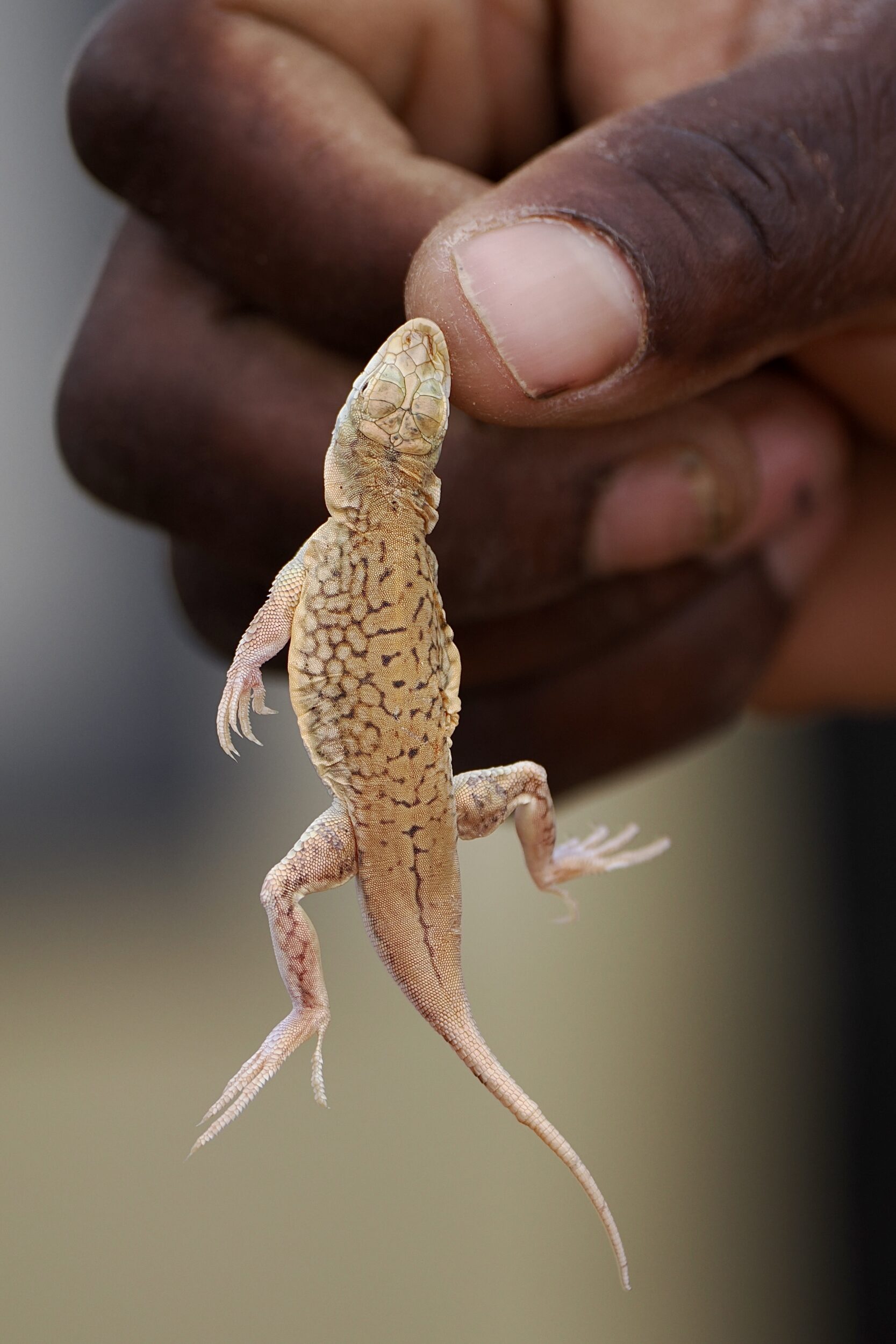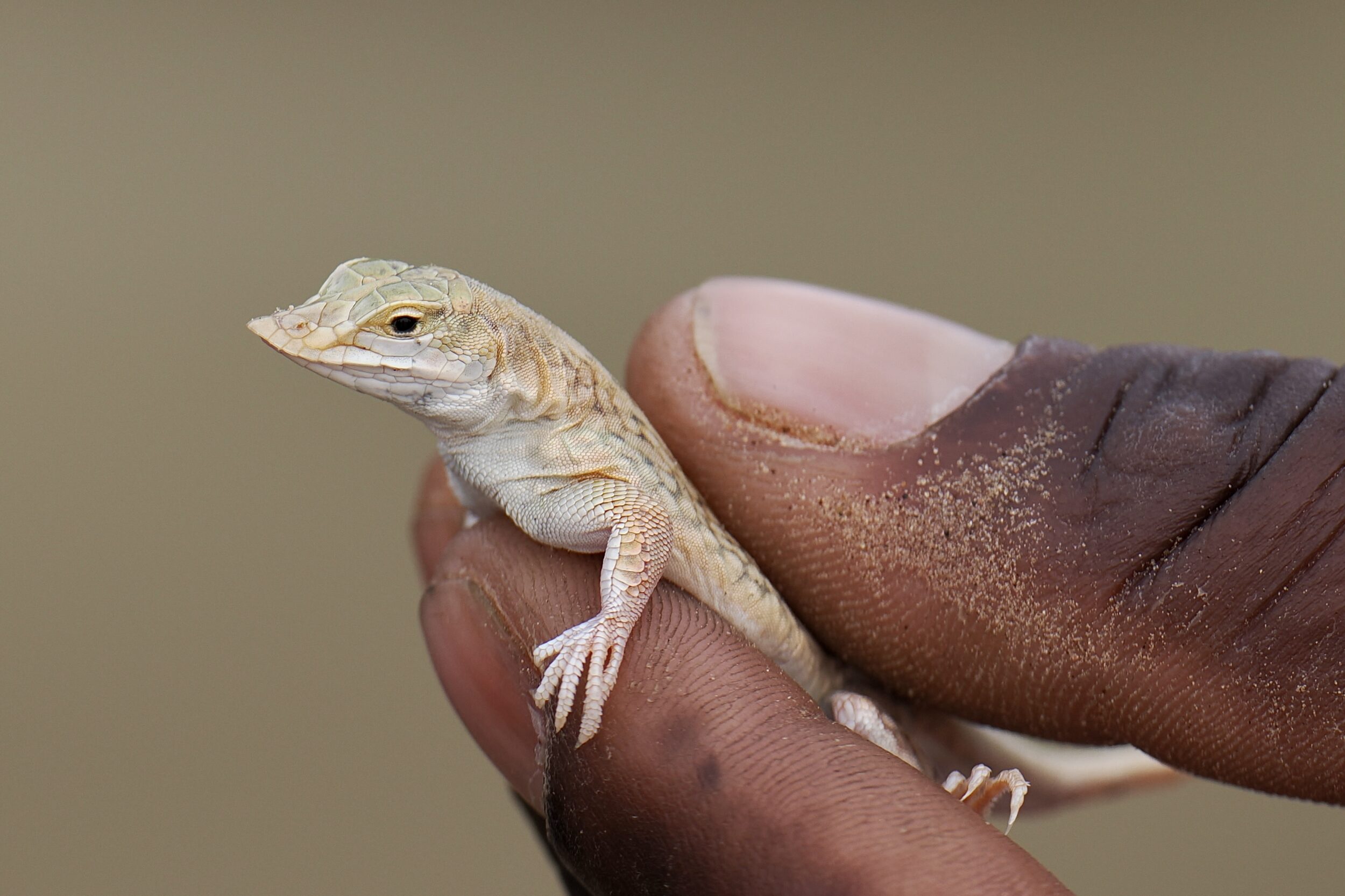Meroles anchietae – the shovel-snouted lizard – is endemic to the Namib Desert’s dunes.
Its signature behaviours – “dancing” atop the sand’s surface on a hot day, and diving into the cooler sand, below – are adaptations developed in order to survive an imminent, lethal threat.
As illustrated in #27 of this series, we were lucky enough to witness its astonishingly speedy sand-diving – a feat in which the key factor is its “shovel”.
Just inland from Swakopmund, and only a few kilometres from the Atlantic Ocean, the afternoon of 19 November 2022 was cool.
Accordingly, whilst our hero did deploy his “shovel” snout in order to escape predators/us, he did not need to dance!
As you can see, this lizard is petite and not lacking in “attitude”.
In addition to its “shovel”, it has very unusual feet.
They are key to its ability to race across the sand at astonishing speed – a useful skill, whether the lizard’s current role is as “predator, in hot pursuit of an insect, arachnid or other small invertebrate”, or as “prey animal, fleeing from a hungry adder”.

Those elongated, “feathery” feet are also key to enabling this lizard to avoid being “cooked” on hot days; sand-diving is also a means of keeping cool-enough, and preventing dehydration.
The video below includes astonishing footage of several exquisitely-adapted Namib-endemic species “in action”.
One of them is very probably “our” planet’s fastest beetle.
However, the most thoroughly gobsmacking “performer” is Meroles anchietae, when literally “dancing” for its life.
